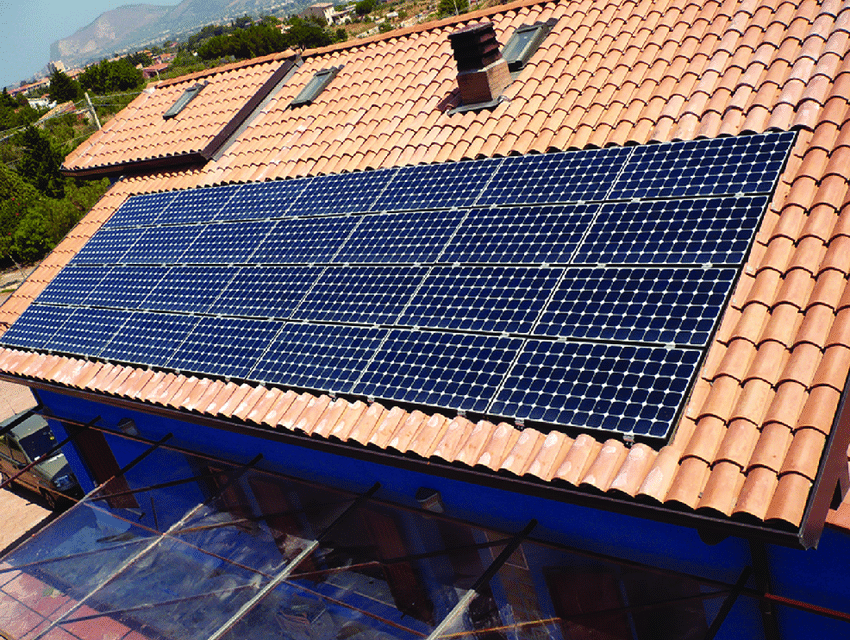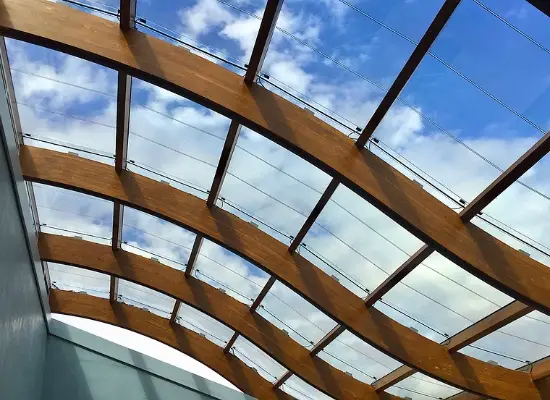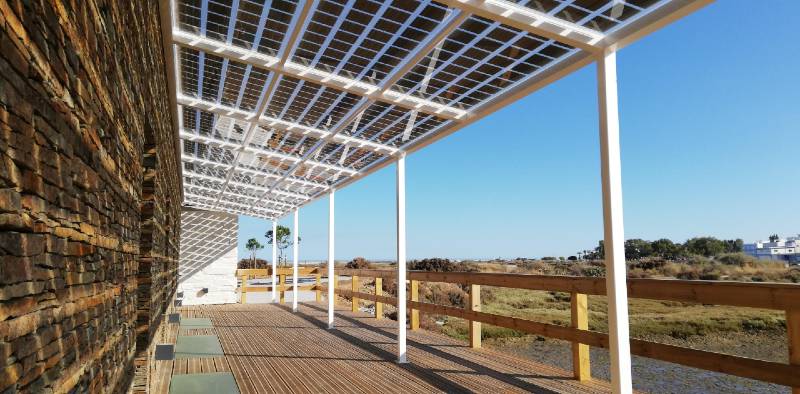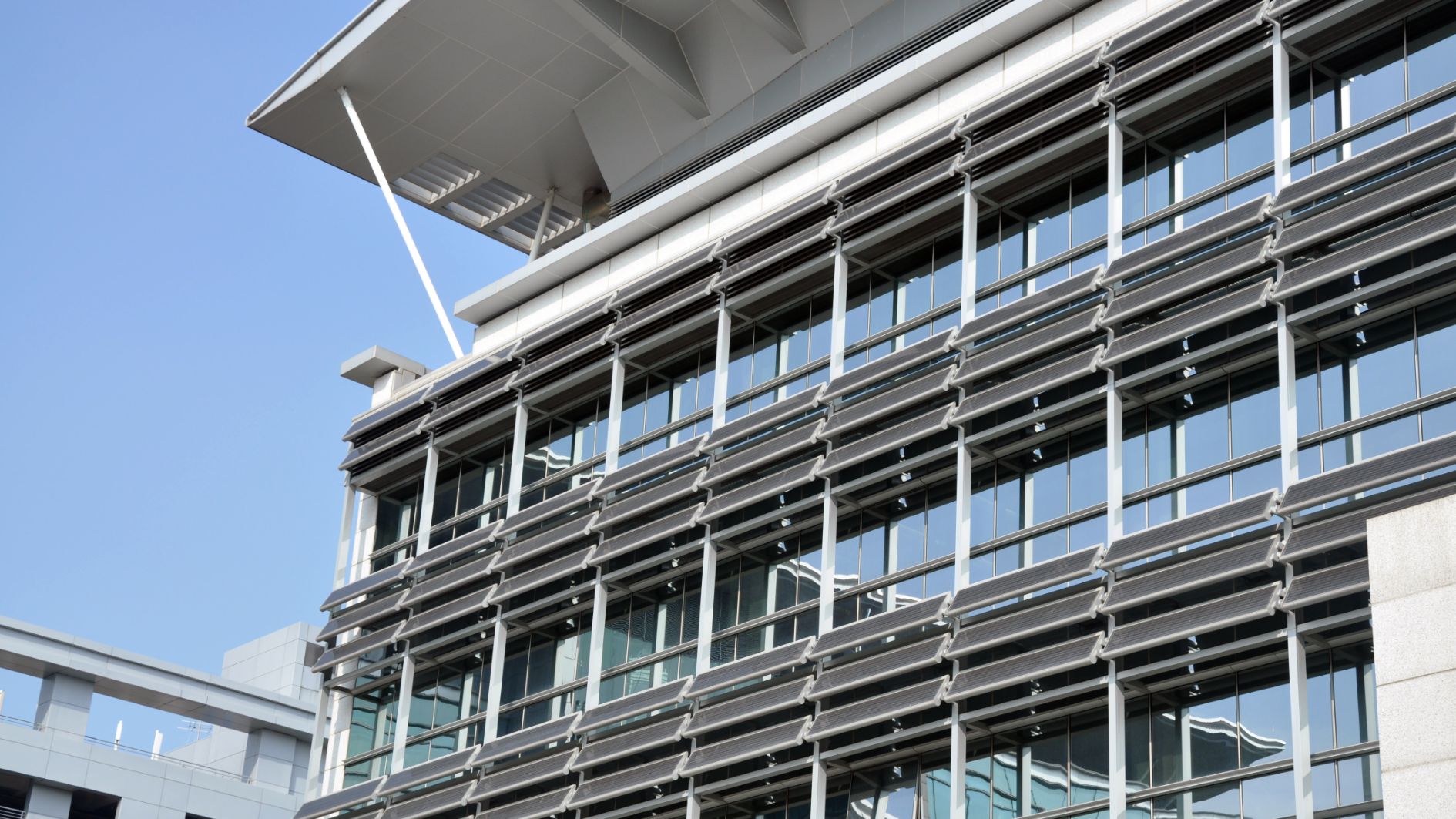Image source: Canva.com
When envisioning solar energy, you might picture traditional solar panels installed on rooftops or sprawling fields of solar arrays. However, advancements in solar technology have led to the development of a more sophisticated and integrated approach known as “building-integrated photovoltaics,” or BIPV. BIPV represents a revolutionary leap in solar technology, where solar components are seamlessly incorporated into the very fabric of building structures.
Rather than being an add-on or an afterthought, BIPV products are designed to blend harmoniously with the building’s architecture. They can be integrated into various building elements such as windows, facades, roofs, and even shading devices, turning these structures into active solar power generators. This innovative approach not only maintains aesthetic appeal but also enhances energy efficiency by utilizing surfaces that would otherwise remain unused for power generation. By embedding solar technology directly into the building’s design, BIPV provides a creative and functional solution for generating renewable electricity, offering both environmental benefits and cutting-edge architectural possibilities.
Understanding the Benefits of BIPV Technology
Traditional solar panels typically lack structural functionality when installed on buildings. In contrast, BIPV (building-integrated photovoltaics) serves a dual purpose. It not only generates solar electricity but also functions as an integral structural component of buildings.
Currently, BIPV products are predominantly tailored for large commercial buildings such as apartment complexes or community centers. Nevertheless, there are exceptions, exemplified by the growing adoption of residential BIPV solutions like the Tesla Solar Roof. Certain roofing companies, such as CertainTeed, are also advancing BIPV technology for residential applications.
Types of BIPV
Building-integrated photovoltaics (BIPV) encompass a variety of structural materials that generate solar electricity. Here are the main examples of BIPV technologies today.
Roofing
One of the most discussed types of BIPV technology is solar roofing, also known as solar shingles or solar tiles. Unlike traditional rooftop solar panels placed on top of existing roofs, solar roofing involves replacing roof shingles or tiles with photovoltaic roofing materials. These dual-purpose materials provide both shelter and electricity generation.
Solar roofs offer several potential benefits, but the technology is less mature compared to conventional solar panels. The efficiency of solar roof cells is generally lower than that of traditional monocrystalline or polycrystalline solar panels. Additionally, the cost of installing a solar roof is typically higher than that of a rooftop solar panel installation.

Image source: ResearchGate
Transparent Glaze
Given that buildings have more sun-exposed surfaces beyond the roof, utilizing these areas for solar energy generation makes sense. Solar windows or solar glass are examples of BIPV products that utilize transparent glaze and ultra-thin solar cells to capture sunlight while maintaining transparency, functioning like standard windows.

Image source: Leeline Energy
General Building Elements
This category encompasses various ways of integrating solar technology into building structures beyond rooftops. It includes solar awnings, building facades, or any structural elements of a building’s sides that can incorporate solar technology. These solar-integrated building elements often employ lightweight thin-film solar panels or organic solar cells.

Image source: Kuby Renewable Energy
These BIPV technologies showcase innovative approaches to integrating solar electricity generation into building structures, expanding beyond traditional rooftop installations.
Pros and Cons of Building-Integrated Photovoltaics (BIPV)
Building-integrated photovoltaics (BIPV) offer both advantages and challenges, shaping how they fit into the renewable energy landscape.
Advantages of BIPV
BIPV taps into the abundant solar energy hitting the Earth’s surface, providing a sustainable way to generate electricity directly from building materials. This utilization contributes to reducing reliance on conventional energy sources.
Aesthetically, BIPV solutions like the Tesla Solar Roof blend solar technology seamlessly into building designs, offering a sleeker alternative to traditional rooftop solar panels. This integration appeals to those who prefer a more discreet solar solution or want to showcase environmental consciousness in their building design.
Disadvantages of BIPV
Integrating BIPV into a building requires advanced planning and design considerations compared to retrofitting traditional solar panels. The building must be designed from the outset to accommodate solar generation, influencing both the architectural layout and construction costs.
Cost remains a significant drawback for BIPV systems. As a newer technology in comparison to standalone solar panels, BIPV tends to be more expensive. Additionally, the efficiency of BIPV cells may be lower than that of conventional solar panels, affecting the overall electricity production efficiency.
It’s important to note that retrofitting a building with solar technologies, though similar in outcome, technically falls under building-added photovoltaics (BAPV) rather than true BIPV. The distinction lies in the timing and integration approach, impacting both terminology and implementation strategies.
Choosing Your Solar Solution with SolarWiki
Whether you’re considering a solar shingle roof or traditional solar panels, SolarWiki provides a platform to compare solar quotes from local companies for free. Simply sign up with your email address to connect with pre-screened, vetted solar providers in your area, facilitating informed decision-making for your renewable energy investment.





